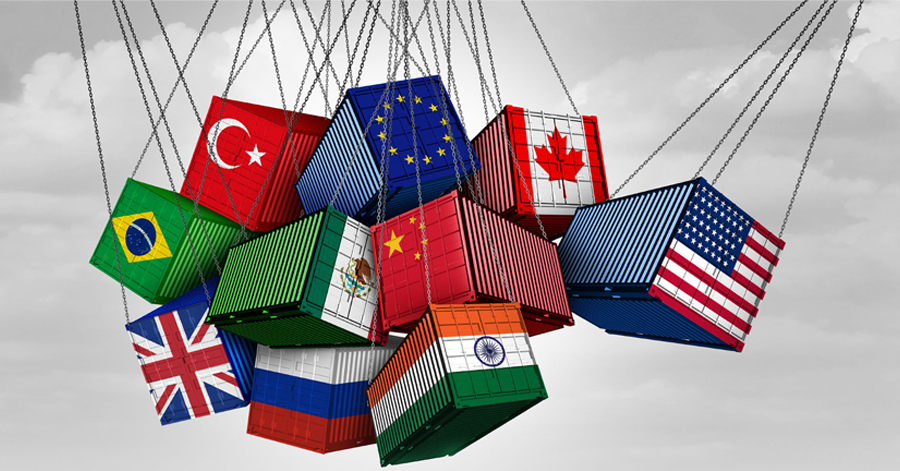Why Tariffs Are Stealing the Spotlight in 2025
We’re only a few months into 2025, and yet one word has dominated nearly every conversation in global trade and transportation: tariffs. Since Inauguration Day, the landscape has shifted dramatically—with new duties, revised agreements, and retaliatory tariffs shaking up supply chains across the globe.
These rapid changes are creating uncertainty for logistics professionals, procurement teams, and trade compliance experts who now must monitor updates almost daily.
In a world where consistency is critical for supply chain efficiency, tariff unpredictability has become a costly disruptor. From vendor selection to route planning and landed cost forecasting, every part of the process is being affected.
Understanding the New Tariff Landscape
Key Policy Shifts Since Inauguration Day
The new administration wasted no time making its mark on global trade. Several key changes took effect in Q1:
- Reinstatement of steel and aluminum tariffs on imports from countries previously exempt.
- Modifications to Section 301 tariffs affecting a broader range of Chinese goods, including consumer electronics and machine parts.
- New reciprocal tariffs on EU goods, including luxury products and auto components, in response to long-standing trade disputes.
- The introduction of “snapback” provisions, allowing for quick reimplementation of tariffs if trade partners violate terms.
These changes have not only increased costs for importers but also complicated long-term planning due to the speed and frequency of adjustments.
Industries Hit Hardest (So Far)
While no industry is entirely immune, some are feeling the effects more acutely:
- Automotive and heavy equipment: Reliant on cross-border part sourcing and large-scale metal imports.
- Consumer electronics: Facing higher costs on semiconductors and finished goods from Asia.
- CPG (Consumer Packaged Goods): Food and beauty product companies are grappling with increased costs for both raw ingredients and packaging.
- Renewable energy: Solar panel imports and battery components are seeing increased tariffs, affecting infrastructure projects.
Tariff Volatility: The Ripple Effects on Transportation and Logistics
Immediate Cost Impacts
With duty rates rising, total landed costs are increasing fast. Companies are:
- Paying more per container due to higher tariffs and fuel surcharges.
- Experiencing congestion at non-traditional ports, as companies reroute to avoid high-duty entry points.
- Seeing insurance and risk management premiums rise, especially on routes through politically unstable or tariff-affected zones.
Carrier and Freight Strategy Adjustments
Tariff-related rerouting has prompted carriers to rethink their strategies:
- Ocean carriers are restructuring trans-Pacific lanes to avoid ports with elevated duties or delays.
- Trucking companies are adjusting LTL/FTL rates based on customs clearance times and inland congestion.
- Freight forwarders are increasingly promoting transloading and FTZ usage to defer or avoid tariff payments.
Customs and Compliance Pressures
The regulatory burden is growing as customs authorities tighten enforcement:
- HTS code precision is now non-negotiable—misclassifications can trigger penalties or delays.
- Customs audits are on the rise, with U.S. Customs and Border Protection (CBP) focusing on valuation and country-of-origin declarations.
- Companies must respond quickly to changes to stay in compliance and avoid fines or shipment holds.
How Global Shippers Are Responding
Proactive Strategies Supply Chain Teams Are Using
To minimize exposure and cost, companies are adapting with agility:
- Dynamic sourcing: Shifting suppliers to countries like Mexico, India, or Vietnam to reduce tariff exposure.
- Tariff engineering: Altering product composition to qualify for more favorable HTS codes.
- Bonded warehousing: Holding goods in FTZs or bonded facilities to defer duty payments until goods are distributed.
- Scenario modeling: Using digital twin simulations to forecast the financial impact of various tariff changes before making decisions.
Tools & Tech Enablers Being Deployed
Technology is playing a vital role in helping organizations stay ahead:
- Tariff intelligence platforms provide daily updates and alerts on policy changes.
- AI-driven landed cost calculators adjust pricing models in real-time based on duty rates.
- Customs filing software and dashboards integrate with ERP systems to track compliance and reduce error rates.
The Hidden Danger: Missed Refunds and Overpayments
Why Overpaying Duties Is More Common Than You Think
With so many changes in play, overpayments are almost inevitable. Some common issues include:
- Failure to apply retroactive reclassifications or exclusions.
- Overlooking preferential duty programs like USMCA or GSP.
- Double payment of duties due to lack of internal coordination or misunderstanding of FTZ rules.
What Most Freight Teams Miss
Even well-resourced teams can overlook key opportunities for recovery:
- Infrequent audits of customs documentation and duty payments.
- Lack of communication between logistics, procurement, and accounts payable departments.
- Overreliance on freight forwarders without independent post audit validation.
Expense Recovery: A Crucial Countermeasure in 2025
What Post Audit Really Means in the Context of Tariffs
A thorough post audit can uncover and recover hidden costs buried in transportation and customs records. This includes:
- Reviewing historical entries for HTS misclassifications or valuation discrepancies.
- Identifying unclaimed duty refunds or improperly applied rates.
- Reconciling invoices to identify duplicate payments or errors.
Benefits of an Ongoing Audit and Recovery Program
Post audit isn’t just a one-time fix—it’s a long-term safeguard:
- Recover thousands or even millions in overpaid duties and fees.
- Improve cost visibility and financial forecasting accuracy.
- Strengthen your compliance position in case of CBP audits or inquiries.
Final Thoughts: Tariff Uncertainty Is the New Normal
While some may hope for stabilization later in the year, the reality is clear—tariff-related uncertainty is now a permanent fixture in global trade. Companies that can’t flex, adapt, and recover costs effectively will find themselves at a competitive disadvantage.
Partner with Trans Audit to Protect Your Bottom Line
At Trans Audit, we specialize in Global Transportation Post Audit and Expense Recovery. Our deep industry experience and proprietary tools are designed to help you uncover:
- Tariff overpayments
- Misclassified goods
- Freight and customs invoice discrepancies
- Unclaimed duty drawback opportunities
We don’t just identify issues—we deliver results. If you’re navigating the choppy waters of 2025’s tariff environment, don’t go it alone.






